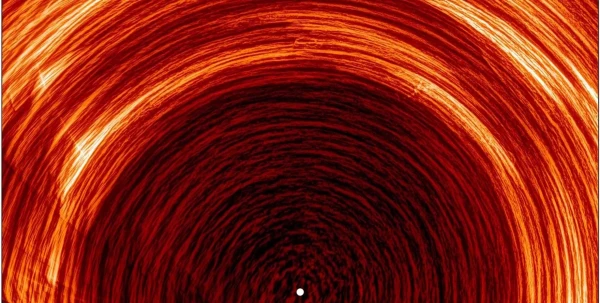
This year, for the first time in history, scientists obtained an image of the polar region of the Sun — the image brought an unexpected surprise. Scientists now believe that the magnetic field is actually moving toward the poles faster than expected, writes Focus.
The European Space Agency's Solar Orbiter mission has been placed into an orbit inclined relative to the plane of the Solar System — this has allowed scientists to obtain an image of the Sun's polar magnetic field for the first time in history. The first scientific data obtained from this incredible view has already been published and presented several curious surprises to scientists, writes IFLScience.
Thanks to the mission, scientists have for the first time been able to study the magnetic field in the polar regions of the Sun. The Sun's magnetic field underlies its 11-year activity cycle, and what happens at the poles is important. However, previously, scientists could not observe it in this way.
Solar magnetic activity is characterized by the circulation of plasma in each solar hemisphere. Near-surface plasma drifts from the equator to the poles and then, residing inside the Sun, returns to the poles. According to researchers, this cycle affects the entire hemisphere, and the poles have always been considered a key region of this process, but until now, scientists had only a superficial understanding of what was happening.
The Solar Orbiter mission has changed the situation: the spacecraft was able to track cells of hot plasma separating the surface of the Sun, also known as supergranules. It is known that supergranules are two to three times larger than Earth, and as a result of plasma convection, their horizontal surface pushes the field lines to the edges. This results in what we see as the Sun's magnetic network.
Based on a superficial understanding, it was previously thought that plasma cells and the magnetic field move toward the poles more slowly than at the equator. However, the mission showed that the speed is actually several times higher than expected — about 10–20 meters per second — which is nearly the same as at lower latitudes.
According to the head of the research group at the Max Planck Institute for Solar System Research, the first author of the study, Lakshmi Pradit Chitta, supergranules at the solar poles actually act as a kind of tracer and for the first time in history allow us to see the polar component of the global 11-year circulation of the Sun.
The authors of the study also note that understanding the movement of plasma has provided important clues about the magnetic field on a global scale. Scientists acknowledge that this is just the beginning and it is still unclear whether the Sun's "magnetic conveyor" really slows down at the poles. New data once again proves how important observations from such missions are for the overall understanding of the Sun.














Leave a comment